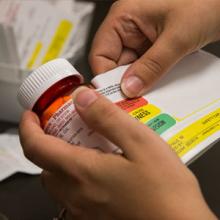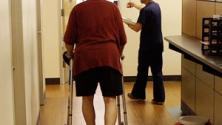What is the challenge?
Most acute and chronic conditions are now treated with medications—often several of them. This has created major challenges for patients and for the team caring for them:
- Medication errors: Complex drug regimens often result in potentially dangerous errors in prescribing or taking medications.
- Non-adherence: Approximately 50 percent of patients do not follow their drug regimen.
- Clinical inertia: Approximately 50 percent of chronically ill patients not reaching clinical targets have not had their regimen intensified.
- Appropriate pain management and drug-seeking behavior: For many primary care practices, managing chronic pain and opioids safely and effectively has increasingly become an area of concern.
What needs to change?
It is not enough to write a prescription, educate the patient, and hope for the best. Practices need to:
- Know what their patients are and are not taking, by using an effective, thorough “medication reconciliation” processes.
- Optimize prescribing by using guidelines and standing orders.
- Titrate drugs to reach clinical targets safely.
- Improve patient safety by recognizing and avoiding the use of unsafe prescribing practices (e.g., polypharmacy and use of unsafe medications in older adults).
- Identify non-adherence and other drug errors through medication reconciliation and refill monitoring.
- Manage patients with chronic pain (with and without drug seeking behavior) effectively, safely, and humanely.
Multiple members of the practice team need to be involved to get this work done systematically. Many LEAP practices strongly recommend integrating a pharmacist into the team.
What do we gain by making these changes?
Adhering to prescribing guidelines, including titration recommendations, routinely reconciling meds, and assessing adherence, and working collaboratively with patients to address medication problems reduces errors, improves adherence, and helps achieve clinical goals.
- Routinely reconcile medications and prevent or address medication issues.
It can be useful to have trained MAs routinely conduct comprehensive medication reviews (“medication reconciliation”) with patients during the rooming process or telephonically, particularly following discharge from an inpatient facility. The goal is to assess patient medication use in a non-judgmental way so you can identify:
- Potential side effects.
- Errors of commission (taking drugs not on the medication list or using drugs not as prescribed).
- Errors of omission.
- Needs for further medication information and education.
But care must be taken to ensure that MAs and other practice staff have the skills and tools they need to conduct an effective medication assessment and reconciliation. Additionally, patients having difficulty with their medications and/or not reaching clinical targets may need more detailed medication reconciliation and assessment of their drug adherence or clinical inertia. This often requires clinical knowledge and the involvement of a pharmacist or nurse to identify opportunities for regimen or behavior changes. Practices with access to comprehensive pharmacy data should try to use refill data to clarify what drugs patients have, and identify patients with refill gaps.
- Develop individualized medication plans.
Providers should work with patients and their families to establish explicit treatment goals (e.g., maintain systolic BP <140) and develop a medication plan to reach those goals. For complex patients or patients with uncommon conditions, working with a pharmacist can be very helpful. The medication plan includes: drug information and dosing, follow-up and titration/stepped care recommendations, and interventions to improve adherence.
- Involve patient and team in titrating medications.
Many medications need to be adjusted to reach clinical targets and minimize side effects. New medications are often started at a low dose and stepped up as needed. For drugs like warfarin or insulin, adjustments need to be made continuously. These adjustments generally do not require repeated office visits, and can be done by phone or email by pharmacists or nurses working from explicit treatment plans based on guidelines and standing orders. Many patients can be trained to safely and effectively titrate their medications.
Drug management may be the function of nurse care managers that has the largest impact on outcomes. Nurse care managers should be trained and given standing orders accordingly.
- Manage chronic pain and opioids safely, effectively and humanely.
Safe prescribing for patients with chronic pain now presents major challenges for most primary care practices. Many organizations have found it to be helpful, even essential, to develop explicit guidelines for the use of opioids for chronic pain, and the use of a multi-disciplinary approach for the management of patients who are aggressively seeking drugs. Most LEAP practices have such guidelines, and use population management tools (e.g., registries) and staff to monitor their chronic pain patients, as well as actively engaging patients in the risks of opioids for chronic pain, including the use of informed consents and patient contracts. Staff, especially front desk personnel, need training and support in dealing with these issues. Best practices used at several LEAP sites include preventing pain medication addictions by helping patients cope with chronic pain using multi-disciplinary approaches rather than using opioids.
Publications
ToolkitsImplementation guides and other documents with extensive resources included
WorkflowTemplates, flow sheets and mapping aids
Patient materialsAction plans, brochures, team cards, welcome letters
Clinical protocolStanding orders, risk stratification forms and hospital transition protocols
LEAP Learning ModuleOther helpful topics included in this website
If you have a question about the improvements, action steps, or tools & resources in this module please let us know. We're here to help. And if we can't answer your question, we can probably connect you with someone who can.










